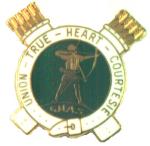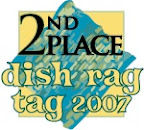
I use Google Docs as my word processor for most writing I do. Occasionally when I'm checking my word count, I also glance at the reading level scores that are provided along with all the other statistics about my document. They're consistently in the 13-16 grade range -- college level.
These scores calculate characters per word, words per sentence, syllables per word, and similar measures. In the Flesch-Kincaid Reading Ease formula, for example, easy-to-read texts score in the nineties and difficult texts score in the twenties. Reader's Digest has a readability index of about 62, according to the Wikipedia page on the Flesch-Kincaid method. The Harvard Law Review usually tests in the low 30's. My latest book review for the A.V. Club scored 30.69.
Now I assume that I'm writing for people with a college education. But does that mean that I shouldn't try to write on a more accessible level? Part of it is my preferred style of long sentences that accumulate detail, examples, appositives, and lists snowball-fashion as they roll to their conclusions. Part of it is my penchant for shoving together words and phrases to make new descriptors out of old parts.
I don't think my usual style is just academic obscurantism. There is a conventional rhythm to academic writing that I can switch on and off depending on what kind of text I'm working on, and I admit to enjoying the precision and sophistication of that language at its best. But there are complicated ideas that can only be properly qualified and correlated in terminology that's far from ordinary speech.
I can write more simply when needed. The Flesch reading ease scores of the answers I provide for "Ask The A.V. Club" are in the 60's; those are more casual and less compressed pieces of writing than my reviews. Toxophily scores as "junior high school" on the same test linked above; I write more conversationally in that setting and about that subject.
Do your readability scores differ by topic, audience, or setting? Do you think that, like some government agencies, we should all try to write for an eighth-grade reader?





3 comments:
It is a combination of the three that allows us to determine how we should speak. Maybe I am too busy being a pluralist, but it is all about context.
Never should we dumb down our writing though! We might need to rephrase something to be less awkward, but this does not constitute dumbing. Dumbing assumes the reader is, well, dumb. When we assume this we allow people to become dumb.
Of course, I barely maintain the use of real words, much less 13-16 grade level.
Well, looks like Silly Hats Only is at a junior high writing level. I was a little surprised by this, given my affinity for subordinate clauses and the like. For a second there, I misinterpreted this as saying that my writing was at a junior high level, which seemed vaguely insulting to me considering many junior high schoolers (and high schoolers, for that matter) aren't very good writers. Not saying I am, but at least I can structure a sentence.
I guess the fact that I do so many picture posts and the like over there probably drove the reading level down, considering that the blog where I write my short reviews was at a college level. But I'm not going to dwell on it either way- I'm not writing to impress people, after all. In a setting like this, we write how we write, and as long as the style suits the ideas, there's no shame in that.
This is distressing. While the Blog Readability Test gives Word + Craft the "College Level" seal of approval, Google Docs just recommends that I drop out of school and start writing for Reader's Digest.
Post a Comment